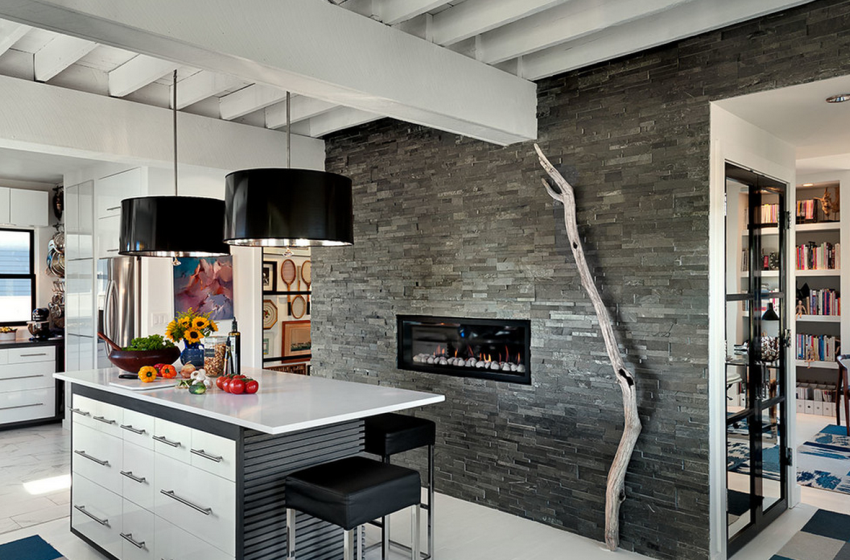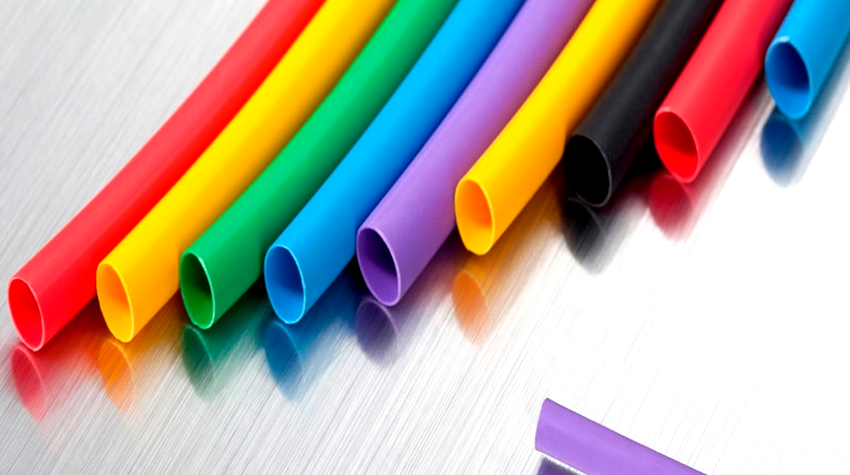Content
- Cork flooring
- Advantages and disadvantages of cork
- Types of flooring from cork
- Types of cork coating by type of installation
- Where cork floors will be appropriate
- Features of the installation of cork floor
- Castle or glue plug: what to choose?
Cork flooring has appeared on the building materials market relatively recently. Its appearance did not cause much excitement: many reacted to the new product with mistrust because of rumors about the fragility and fragility of the cork. But common sense and the natural desire of a modern person to everything eco-friendly and natural do their job - cork coating is gaining more and more fans. We will find out what it represents and whether it makes sense to abandon the usual laminate or linoleum in favor of this exotic material.

Cork flooring
For the manufacture of cork floors, the bark of an ancient tree is used - cork oak growing in Africa and southern Europe. The choice of this particular material is due to the fact that the upper layer of the cortex is able to withstand destruction for a whole hundred years and differs unique structure: microscopic holes in the cortex are clogged with natural gases, and this gives the material special quality characteristics.
In the production of flooring, pressed wood chips and solid wood veneer are used.

The high cost of cork is explained not by “wrapping for exotic”, but by the fact that removing bark from cork tree can only be when he reaches 25 years of age, and until the next removal follows an interval equal to 9 years.
Advantages and disadvantages of cork
The main advantages of cork flooring include the following features:
- Environmental friendliness.
- Hypoallergenicity.
- Durability with proper care.
- Excellent heat-insulating and sound-absorbing properties.
- Depreciation qualities - walking on this floor has a beneficial effect on the health of the human musculoskeletal system.
- Antibacterial properties, non-susceptibility to attacks of any pests.
- Antistatic.
- Resistance to deformation.
- The cork floor does not slip.
They say that the cork has “internal heat” - it is warm to the touch, it’s nice to walk on it with bare feet.

And now about the minuses of using cork as a floor covering:
- Laying a cork floor is considered a rather time-consuming process and installation on its own is not recommended (to a greater extent this relates to adhesive cork).
- The coating has low tensile strength - traces of furniture legs, heels and claws of pets can remain on it.
- Possibility of peeling off a layer of protective varnish from the surface of the cork plate.
- High price.
USEFUL INFORMATION:Wallpaper for the corridor in the apartment (11 photos)
When purchasing plates from cork, pay attention to the protective varnish coating on the front side. If it is absent, it is necessary to independently apply a protective varnish, otherwise the surface may eventually take on an unpresentable appearance. In addition, socks and slippers will quickly wear out due to the rough surface of the untreated cork.
Types of flooring from cork
In the modern market of building materials, three types of cork flooring are presented, which differ in manufacturing technology, characteristics and, accordingly, price.

- Solid wood veneer, or cork, is the most expensive. The high price is justified by the fact that the plates are selected strictly by color (which is rather difficult to do), and the manufacturer's costs for such a floor are very high. Available in the form of plates or panels coated with wear-resistant varnish, the average thickness is from 4 to 6 mm. Often, manufacturers protect the back side with vinyl film for ease of installation on concrete floors.
The whole cork can be recognized by the figure - these are figures of complex shapes of yellow-brown color.
- Cork crumb coating, or agglomerate, is considered the cheapest among the three types of coating, as this is waste from production, processed and pressed into slabs for further laying. It differs in appearance - its fine-grained texture resembles a wine cork. It is an excellent budget option, not inferior in performance to the whole veneer coating.

- Cork MDF panels are an intermediate option both in price and quality. The so-called cork laminate is based on several layers: an MDF base, pressed cork crumb and a cork veneer with a protective coating (varnish or vinyl film).
Be careful! Sellers in construction stores often offer wood chipboards, passing them off as whole veneers and significantly raising the price.
According to manufacturers, all three types of cork coating do not differ from each other in terms of reliability.
USEFUL INFORMATION:Soundproofing rooms in an apartment in a new building
Types of cork coating by type of installation
Cork coating differs not only in appearance and price, but also in its laying system. There are three types of cork flooring with different installation methods:
- Glue cork floor.
- Cork floor with lock (floating floor system).
- Technical cork (not a basic coating, used as a substrate for laminate, linoleum).
Adhesive coating
Adhesive cork flooring is the most popular. Using contact adhesive, the cork boards are manually alternately glued to the floor base. Standard tile sizes found in hardware stores:
- 30 x 30 cm;
- 45 x 15 cm;
- 60 x 30 cm;
- 45 x 45 cm.
Thickness - up to 6 mm. Designers successfully use adhesive tiles, combining several colors in the interior to get an original floor pattern.

Laying the cork floor on the adhesive requires the use of special contact adhesive recommended by the manufacturers.
Advantages of adhesive cork tiles:
- Lack of micro-gaps.
- Possibility of laying in rooms with high humidity.
- Good durability.
- Lower price.
Floating cork floor
A cork floor with a locking system implies the same installation method as when laying a laminate, where one panel is inserted into another and held by special locking joints.

Technical traffic jam
A cork backing is a material having a thickness of about 3 mm and sold in rolls of large width that fit under laminate to provide heat and noise insulation.

Where cork floors will be appropriate
The use of cork floors is recommended for the following rooms:
- Children's room. This is an excellent choice to ensure the comfort and safety of the child - if there is a fall on the floor, there will be no serious injuries. Walking barefoot on a pleasant and soft cork floor is useful for children of any age, since it has a beneficial effect on the psyche.
USEFUL INFORMATION:Do-it-yourself soft wall panels

- Bedroom. All the same reasons as for the nursery.
- Study. The cork has soundproofing and sound-absorbing properties, so it will gently dampen sounds that interfere with operation.
- Living room. For cork flooring in the living room, it is recommended to use a cork laminate, since it has more wear resistance than a clean cork, and will delight the owners for more than one year.

Features of the installation of cork floor
A distinctive moment in the installation of cork flooring is a particularly thorough preparation of the floor base before installing cork boards. The surface should be perfectly flat and without the slightest tubercles. It will require pouring a cement-sand screed or using a self-leveling mixture.
An important point is waterproofing. The floor of the cork must be protected from possible moisture from floor slabs.

Adhesive cork flooring can only be laid on non-moisture-resistant substrates.
Further laying of the coating depends on the selected type of cork boards - this can be done with glue when using glue tiles or special tools (rubber mallet, hand saw and exact level) when laying the cork with a key system.

Cork flooring should be done from the center of the room with a gradual advancement to the walls.
Castle or glue plug: what to choose?
The main arguments in favor of the castle system are simple installation, which even a novice can do, and the possibility of restoration in case of damage to a separate section of the floor. However, when choosing a cork laminate, you need to keep in mind several important points:
- Floating cork floors can only be laid in dry rooms;
- the damaged lamella can indeed be replaced, but for this you will have to disassemble the floor from the wall to the damaged element;
- such a coating is more demanding in care.

Glue plug can be used in any room, even in the bathroom. However, laying it yourself is not recommended due to the complexity of the process and the risk of damage to the material. It should be borne in mind that the cost of installing an adhesive floor is 3 times more expensive than laying a laminate.

EXPERT SITE
Tsugunov Anton Valerevich
Master Station Wagon
- Since 2003, I have been engaged in the repair and decoration of premises.
- Over 100 completed objects.
- I appreciate the quality, more than the quantity!
Personal page >>>
Friends!
I offer you the service "Friend Builder"
As this site develops, subscribers and visitors are turning to me more and more often asking for help with advice on various issues of repair and decoration.
Questions are sometimes asked very complex and interesting. You can’t write an article for each situation, so I decided to advise you individually.
Thanks to you, friends, a new direction of my favorite work has been born - share your experience and benefit everyone who is undergoing repairs!
Get a one-time consultation from me >>>
Order full apartment repair support >>>


